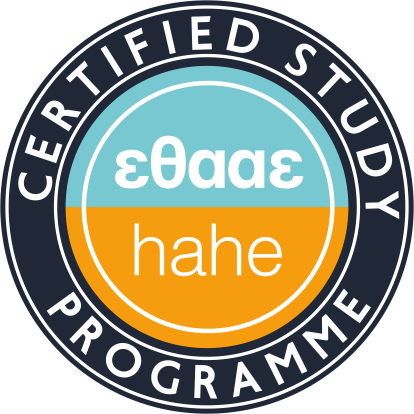Translation of EU Texts
Teaching Staff: Sosoni Vilelmini
Course Code: YE-0604
Gram-Web Code: ΜΚΕΕ01
Course Category: Specific Background
Course Type: Compulsory Elective
Course Level: Undergraduate
Course Language: English / Greek
Semester: Any Winter
ECTS: 2
Total Hours: 2
Erasmus: Not Available
E Class Page: https://opencourses.ionio.gr/courses/DFLTI356/
The module seeks to introduce students to the translation of EU texts. This involves an introduction to the nooks and crannies of the European edifice as well as the idiosyncracies of EU texts. Emphasis is given on the linguistic equality of EU texts and their subsequent surface similarity and ‘hybridity’. Students learn how to produce texts which not only conform to Target Readership (TR) expectations and are terminologically accurate, but which are also in line with the EU Institutions demands and guidelines. As a result, students become effective users of the phraseology, expression terminology and idiolect of EU texts. They learn how to cope with the socio-political EU context and at the same time meet the market demand for highly-competent translators of EU texts. Students are also familiarised with the language of politics, the characteristics of speeches, the art of spin, as well as various types of propaganda writing, such as Web texts produced by the EU Institutions and addressed to the wide public. Finally, they are familiarised with the EU tools available to translators and with the European Commission's Machine Translation System (eTranslation).
Upon completion of the course, students will be able to:
- understand the European construction and the wider socio-political context in which EU texts are produced
- distinguish the different genres and specific features of EU texts (e.g., linguistic equality, surface similarity, hybridity, intertextuality)
- translate EU texts (political, economic, legal, etc.) following the guidelines and strict standards set by the EU institutions
- resolve translation problems relating, inter alia, to terminology, phraseology and idiosyncracies of EU texts
- make effective use of the electronic resources and translation tools provided by the EU
- be competitive in the labor market by being aware of career opportunities in the EU institutions and bodies.
Week 1: Overview of the course: Translating for the European Union, a historical overview and the policy of multilingualism (Europe in 12 Lessons).
Week 2: EU institutions, decision-making and decentralized agencies.
Week 3: Lawmaking in the EU, multilingualism, linguistic equality, collective and non-native speaker drafting, textual hybridity. Analysis of legislative texts.
Week 4: Lack of equivalence of legal concepts, hybridity of the EU legal system, autonomous legal concepts, terminology issues, neologisms and cultural-specific items. The illusion of equivalence.
Week 5: Court of Justice of the European Union (CJEU), preliminary rulings, case law of the Court of Justice. Analysis of court decisions.
Week 6: Translation of EU texts and restrictions posed in the EU Institutions' drafting and translation style guides: Interinstitutional Style Guide, Greek Style Guide, Joint practical guide of the European Parliament, the Council and the Commission for persons involved in the drafting of legislation within the Community Institutions, Guide for External Translators.
Week 7: Hands-on session: Translating a text from the lawmaking process.
Week 8: Hands-on session: Translating a text from the lawmaking process.
Week 9: Hands-on session: Translating a Press Release.
Week 10: Web text translation. WEB Texts Translation Style Guide. Ideology and translation, propaganda, the art of persuasion.
Week 11: Hands-on session: Web text translation. Editing a translated text.
Week 12: Editing a translated text.
13th week: Translating for the EU: Job opportunities, market requirements, EU competitions (EPSO). Recap session, Q & A.
Biel, Łucja (2007) “Translation of Multilingual EU Law as a Sub-genre of Legal Translation.” In D. Kierzkowska (ed.) Court Interpreting and Legal Translation in the Enlarged Europe 2006. Warsaw: Translegis, 144–163.
Biel, Ł. (2014) Lost in the Eurofog. The Textual Fit of Translated Law. Frankfurt am Mein: Peter Lang.
Cao, D. and Z. Zhao (2008) “Translation at the United Nations as Specialised Translation”, Journal of Specialised Translation 9 http://www.jostrans.org/issue09/art_cao.php [last accessed 12 August 2016]
Christiansen, P.V. (2006) “Language Policy in the European Union: European/English/Elite/Equal/Esperanto Union?”, Language Problems & Language Planning 30(1): 21-44.
Dam, H. V. & K. Korning Zethsen (2014) “Translators in International Organizations: A Special Breed of High-Status Professionals? Danish EU Translators as a Case in Point”. In C. V. Angelelli (ed.) The Sociological Turn in Translation and Interpreting Studies. Amsterdam/Philadelphia: John Benjamins. 93-113.
European Commission, Translation Resources, http://ec.europa.eu/translation/index_en.htm [last accessed 12 August 2016]
European Commission, Διοργανικό Εγχειρίδιο Σύνταξης Κειμένων, http://publications.europa.eu/code/el/el-4100000.htm [last accessed 12 August 2016]
European Commission, How to Write Clearly, http://ec.europa.eu/dgs/translation/publications/brochures/clear_writing/how_to_write_clearly_el.pdf [last accessed 12 August 2016]
Felici, A. (2010) “Translating EU Law: Legal Issues and Multiple Dynamics”, Perspectives 18(2): 95-108.
Joscelyne, A. (2000) “The Role of Translation in an International Organization”. In R.C. Sprung, (ed.) Translating into Success: Cutting-Edge Strategies for Going Multilingual in a Global Age. Amsterdam & Philadelphia: John Benjamins.
Karoly, A. (2012) “Translation Competence and Translation Performance: Lexical, Syntactic and Textual Patterns in Student Translations of a Specialized EU Genre”. English for Specific Purposes 31: 36-46.
Koskinen, K. (2008) Translating Institutions: An Ethnographic Study of EU Translation. Manchester: St Jerome.
Koskinen, K. (2001) “How to Research EU Translation?”, Perspectives, 9(4), 293-300.
Koskinen, K. (2000) “Institutional Illusions: Translating in the EU Commission”. The Translator 6(1): 49-65.
Sosoni, V. (2002) “Lexical Cohesion: The Case of European Union Texts in English and Greek”. In M. Cazzoli-Goeta, S. Pourcel, S. & L. Van Espen (eds.) (2002) Conference Proceedings of the Fifth Durham Postgraduate Conference in Theoretical and Applied Linguistics. Durham: University of Durham.
Sosoni, V. (2003) Aspects of Lexical Cohesion in EU Texts: A Critical Study of Greek Translations and English Hybrid Texts. Unpublished Doctoral thesis, Surrey: University of Surrey. < http://epubs.surrey.ac.uk/1044/> accessed 17 January 2015, accessed 12 June 2018.
Sosoni, V. (2011) “Training translators to work for the EU institutions: luxury or necessity?” The Journal of Specialised Translation 16, 77–108.
Sosoni, V. (2012) “A Hybrid Translation Theory for EU Texts”. Vertimo Studijos, 5.
Sosoni, V. (2012) “Risk Communication in the EU: An Impossible Task?”. In S. Kvam, P. Langemeyer, K. Solfjeld, A. Parianou and K. Knutsen (eds.) Narratives of Risk: Text Studies, 119-141. Münster: Waxmann.
Sosoni, V. (2018) “Language and Translation in EU Competition Law: Insights from English, Greek, Italian and Spanish Versions of Legislative Texts”. In S. Marino, Ł. Biel, M. Bajcic & V. Sosoni (eds) (forthcoming). Language and Law. The role of language and translation in EU Competition Law. New York: Springer Publishing.
Sosoni, V., Kermanidis, K.L. and Livas, S. (2018) “Observing Eurolects: The Case of Greek”. In L. Mori (ed.) Observing Eurolects: Dynamics of Language Variation in EU Law. Amsterdam/Philadelphia: John Benjamins.
Stolze, R. (2001) “Translating legal texts in the EU.” Perspectives: Studies in Translatology 9(4), 301–311.
Strandvik, I., Vanvik, P. and Beaven, J. (2011) “The ordinary legislative procedure step by step – multilingual aspect.” Luxembourg, 28.03.2011, ppt presentation. accessed 4 May 2011.
Tirkonnen-Condit, S. (2001) “EU Project Proposals as Hybrid Texts: Observations from a Finnish Research Project”, Across Languages and Cultures, 2(2), 261-264.
Wagner, E., S. Bech and J. M. Martínez (2002) Translating for the European Union Institutions. Manchester: St Jerome.
The lesson has a hybrid lecture-workshop format. It is largely based on the interaction with students and classroom discussion. Hands-on sessions focus on practical aspects of the issues covered and described during the lectures. Students have hands-on sessions translating official texts produced by the EU Institutions. The class material is made available on the e-class platform.
Several ICT tools are used, mainly ppt presentations, online videos and Internet resources. The class material is made available on the Open e-class platform.
A final written assignment is used to assess the students. It consists of a translation of an official EU text and a commentary on the translation problems they encountered and the strategies they used to address them, backing them by the theory they learnt during the semester or a terminology assignment.
Back
Undergraduate
Secretariat
Galinos Building (1st floor)
Corfu, GR-49132
Open to the public:
Mon, Wed, Fri: 11am - 1pm
Tue, Thu: 11am - 1pm (Erasmus+)
 E-Class Platform
E-Class Platform
 eSecretariat
eSecretariat
 Webmail
Webmail
 Learning Material Management
Learning Material Management
 Internship Portal
Internship Portal
 Library
Library





 Translation of EU Texts
Translation of EU Texts
